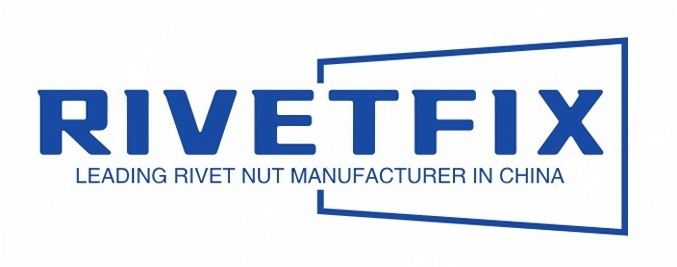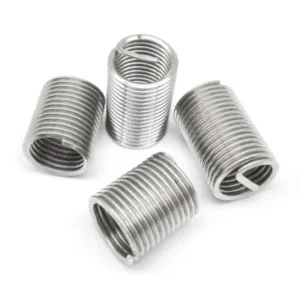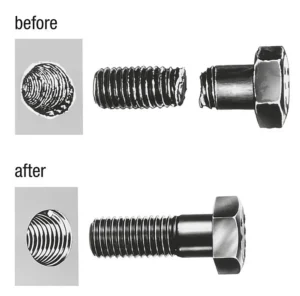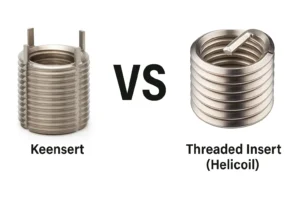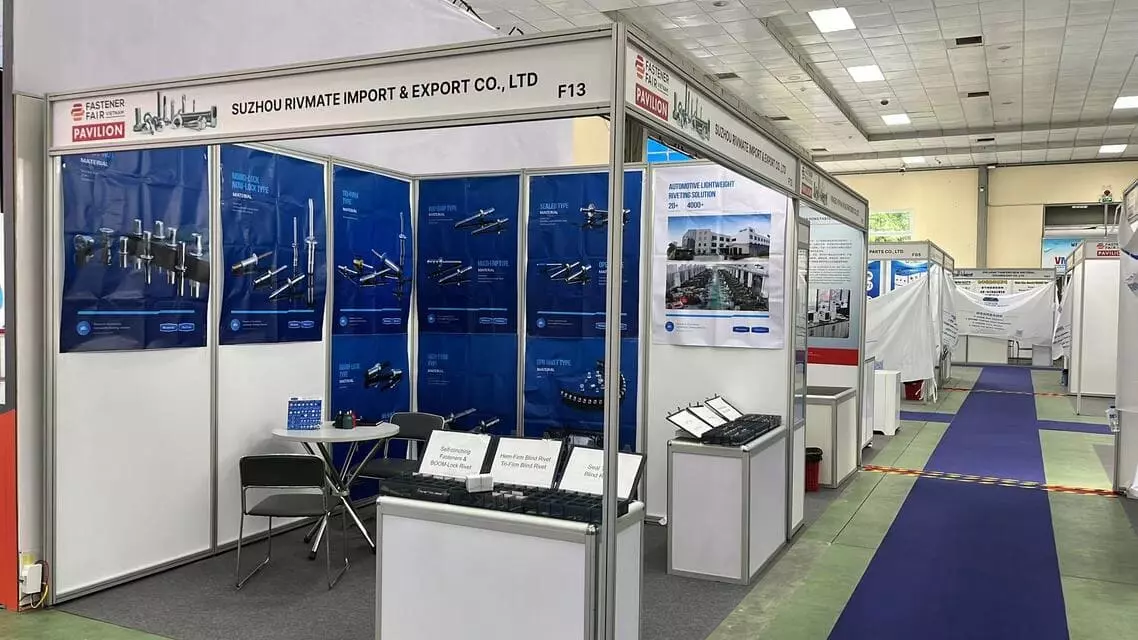What Are Threaded Inserts Used For?
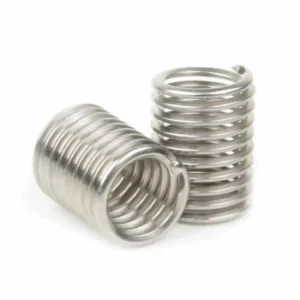
Leading Rivet Nut Manufacturer and Supplier in China
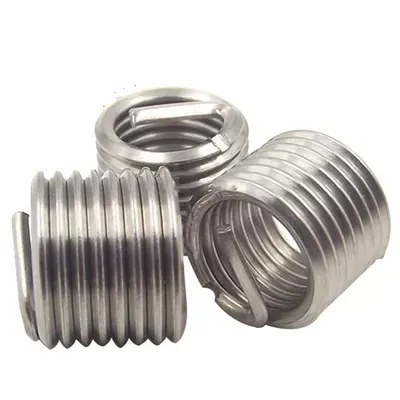
When it comes to creating strong, durable threads in materials like plastic, wood, or soft metals, threaded inserts offer a versatile and reliable solution. But what are threaded inserts used for, and why are they preferred in so many industries? Whether you’re working on automotive components, electronics housings, furniture assembly, or 3D-printed prototypes, threaded inserts ensure secure fastening, repeated assembly, and long-term performance. In this guide, we’ll explore their applications, advantages, and how to choose the right insert for your project.
Table of Contents
Threaded Inserts are metal fasteners that can be pre-installed or post-installed inside a base material. Their primary function is to provide a wear-resistant, reusable, internally threaded structure in softer or more fragile materials, such as wood, plastic, aluminum, and composites. It usually has external threads or a serrated outer wall design and is installed within the base material by pressing, screwing, heat fusing, or injection molding to form a reliable connection point for subsequent screw or stud tightening.
a. Main functions:
- Enhancement of thread strength: especially suitable for materials that cannot be tapped directly or are not strong enough
- Improves wear resistance: avoids damage to the base material or slippage due to frequent disassembly and reassembly
- Enables replaceability and maintainability: allows for easy screw replacement without damaging the body structure
- Provides standardized threaded interfaces: simplifies the assembly process and increases efficiency
b. Differences from other fasteners:

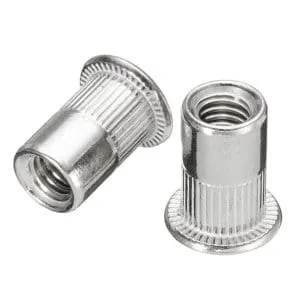
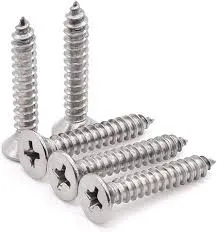
| Item | Threaded Insert | Tapped Hole | Nut | Screw |
|---|---|---|---|---|
| Position of Function | Inserted into base material as a threaded interface | Directly tapped into base material to form threads | Stand-alone part, usually mated with a bolt | Screwed into nut or threaded hole to hold part |
| Material | Soft or brittle materials (plastics, wood, etc.) | Hard metals only, etc. | Used in conjunction with bolts | Used for temporary or permanent fixing |
| Dismantling durability | Extremely high, reusable | Prone to wear and slippage of threads, short life span | Reusable | Prone to wear and tear, limited use |
| Difficulty of mounting | Requires special tooling or heated installation | requires tapping tool and sufficiently strong base material | easy to install | generally installed with hand or power tools |
| Is it secured in base material | Yes | No | No | No |
In summary, threaded inserts are more suitable for application in structural strength is insufficient, need high strength locking or maintainability requirements of high scenarios than the traditional threaded holes or the use of nuts and screws, especially in plastic products, composite parts, 3D printed parts and other lightweight materials have irreplaceable advantages.
How Do Threaded Inserts Work?
Threaded Inserts are a type of fastener used to create strong internal threads in metals, plastics, wood, and other materials. Their central role is to provide a wear-resistant, high-strength, reusable female connection point in the base material. Their working principle can be explained in detail in two ways:
①. Installation principles in soft/hard materials
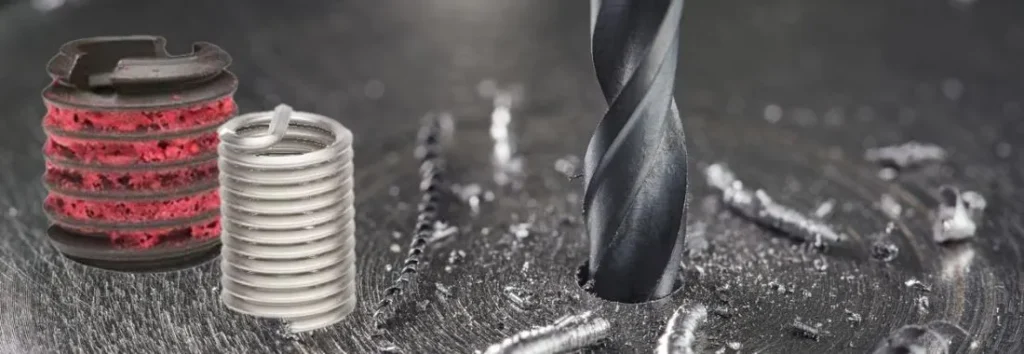
Soft materials (e.g. plastic, wood, aluminum, etc.).
Direct tapping in these materials is prone to slippage or wear, so Hot-Set, Press-In or Self-Tapping Thread Inserts are commonly used:
- Heat-Set: The insert is embedded in the plastic by heating it, and the plastic cools to encapsulate the insert and form a strong bond.
- Press-in inserts (Press-in): the use of inserts outside the knurled or toothed, under mechanical pressure directly into the parent material, relying on friction fixed.
- *Self-tapping inserts (Self-tapping) **: inserts with their own cutting teeth, can be screwed directly into the parent material to form a fixed cutting.
Hard materials (e.g. steel, stainless steel, etc.)
In the metal base material, commonly used is thread repair with a wire nut or thread locking inserts:
- Wire Thread Inserts: These are tapped and fitted into a thread insert to provide a bolt with a precise internal thread that is resistant to wear and tear, and at the same time has the ability to resist vibration and fall off.
- Key-lock Insert: Mechanically locks the insert into the substrate by means of a “locking key” after embedding, preventing rotation and loosening.
②. Work-in-Progress Clamping and Locking Mechanisms
Once installation is complete, the Threaded Insert performs the following functions during subsequent screw assembly:
- Transmission of clamping force when the bolt is screwed into the insert’s internal threads: the insert’s internal threads are highly accurate and can effectively bite into the bolt, resulting in a solid connection.
- External structure of the insert prevents itself from rotating or pulling off: e.g.:
- External knurling/flower teeth: Provides friction or “bite” to resist rotation.
- Hexagonal housing: Mounted in a hexagonal hole to prevent rotation.
- Locking key structure: Mechanically clamps the base material to prevent pull-out.
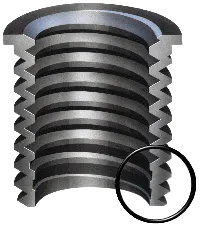
- Disperses stress and protects the base material: Inserts form a cushion between the base material and the screw to avoid damage to the base material caused by frequent disassembly of the screw.
Threaded Inserts (Threaded Inserts) are categorized into a variety of types depending on their mounting method, form factor, and material. Each type has its own unique installation principles and application advantages, and is suitable for different material environments. The following is a detailed description of several common types and a comparison of their advantages and disadvantages:
1. Press-in Threaded Inserts
- Materials: Plastics, soft metals (e.g. aluminum), wood
- Installation Method: Mechanical pressure is applied directly into pre-drilled holes and secured by friction or occlusion provided by external knurling, serrations or hexagonal structures.
- Advantages:
- Simple installation, no special tools required;
- No thermal damage to the base material;
- Suitable for thin-walled structures or parts that cannot be heated.
- Disadvantages:
- Clamping force is dependent on the strength of the base material;
- Susceptible to loosening under conditions of high stress or vibration.
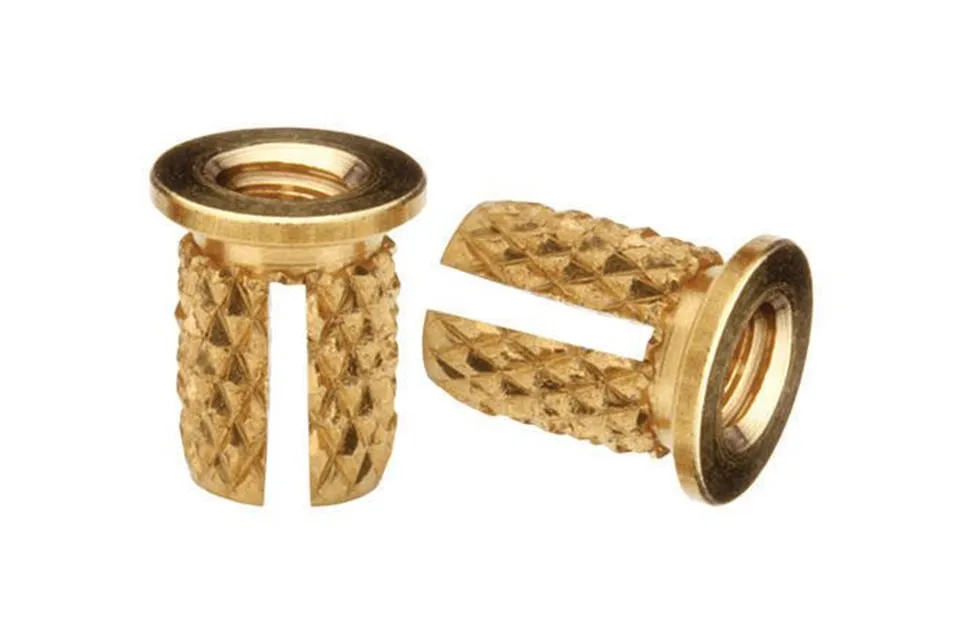
2. Self-Tapping Threaded Inserts
- Materials: Plastics, wood, some light metals.
- Installation Method: Inserts with cut threads are screwed in and self-tapped during installation without pre-tapping.
- Advantages:
- One-step installation, saving process;
- Easy to disassemble and reusable;
- Better tensile and torsional properties.
- Disadvantages:
- Higher installation torque required;
- Easy to damage the base material when the installation precision is low.
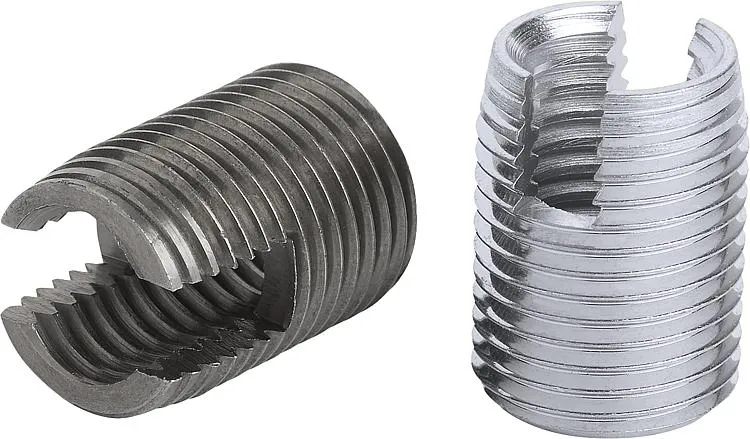
3. Heat-set Threaded Inserts
- Materials: Thermoplastics (e.g. ABS, PC, PP, PE)
- Installation method: Embedded in plastic holes by heating inserts (using a soldering head or soldering iron), the plastic melts and covers the inserts, which are firmly fixed after cooling.
- Advantages:
- High fixing strength and stability;
- Not easy to loosen, strong shock resistance;
- Suitable for small size and precision plastic parts.
- Disadvantages:
- Temperature control is required for the mounting process;
- Cannot be used for thermosetting plastics.
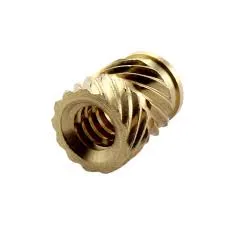
4. Ultrasonic Threaded Inserts
- Applicable Material: Thermoplastic
- Installation Method: Ultrasonic equipment is used to vibrate the inserts to generate frictional heat and embed them in the plastic, which then melts to encapsulate the inserts and cools to cure.
- Advantages:
- Fast installation with high repeatability accuracy;
- Accurate mounting position, suitable for automated assembly;
- Secure fixing, suitable for mass production.
- Disadvantages:
- Requires ultrasonic equipment;
- The cost is higher than the hot melt method.
5. Molded-in Threaded Inserts
- Materials: injection molded thermoplastic products
- Installation Method: Inserts are pre-positioned in the mold during the injection molding process and are encapsulated directly within the plastic during molding.
- Advantages:
- The strongest fixing, not easy to come loose;
- Structural integrity, free of post-installation;
- Ideal for scenarios that require very high connection strength.
- Disadvantages:
- Irreversible installation, damage to inserts requires replacement of the whole piece;
- Complicated mold design, requires precise fit;
- Suitable for batch injection molding scenarios, not suitable for post assembly.
Common Types Comparison Chart
| Type | Suitable Materials | Installation Method | Advantages | Disadvantages |
|---|---|---|---|---|
| Press-in | Plastic, Aluminum, Wood | Press-in | Simple and low-cost | Limited clamping force, prone to loosening |
| Self-Tapping | Plastic, Wood | Self-tapping insertion | Easy installation, strong pull-out resistance | Material may get damaged, high precision required |
| Heat-set | Thermoplastics | Heat embedding | Strong fixation, ideal for precision parts | Requires temperature control, not for thermosets |
| Ultrasonic | Thermoplastics | Ultrasonic insertion | Fast and high-precision | High cost, needs special equipment |
| Molded-in | Injection-molded plastics | Molded during injection | Most stable and strongest structure | Irreversible installation, high mold precision needed |
What Are Threaded Inserts Used For?
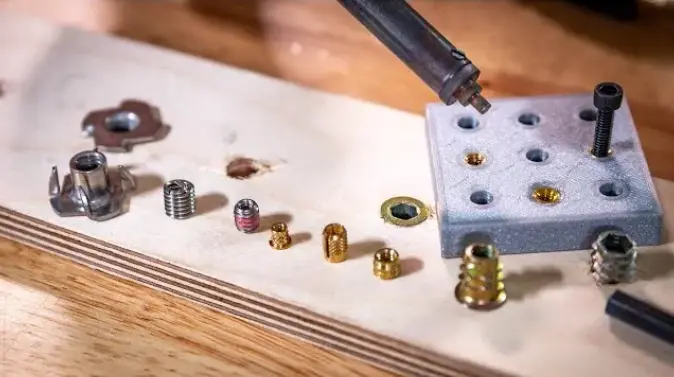
1. Plastic Parts
Typical Scenarios: Electrical Appliance Housings, Plastic Handles, Tool Housings, Household Appliance Components
In a variety of plastic products, threaded inserts are widely used to solve the problem that the plastic base material cannot directly withstand the thread tension or torque. Common applications are such as household appliance housings, plastic handles, power tool housings and so on. The inserts are firmly implanted into the plastic by hot-melting or ultrasonic methods, which not only improves the connection strength, but also allows repeated disassembly to avoid structural failure due to screw loosening or slippery teeth, and is a key means to improve the assembly quality and durability of plastic products.
2. Wooden Products
Typical Scenarios: Furniture Assembly, Wooden Audio, Wooden DIY Structures
In furniture, audio shells or DIY wood structures, Threaded Inserts can make up for the problems of poor wood connections and easy damage from repeated assembly and disassembly. Especially in softwood and plywood, where ordinary screws are prone to loosening, self-tapping or press-in threaded inserts provide a more stable female connection. They are commonly used in furniture prefabricated parts and movable screw structures, which not only enhance the overall stability of the wood structure, but also facilitate future disassembly and maintenance.
3. Metal Components
Typical Scenarios: Sheet Metal Construction, Aluminum Alloy Casing, Thread Repair
In metal components such as sheet metal and aluminum alloys, direct tapping of threads is likely to cause damage to the threads due to insufficient wall thickness or frequent use. At this time, threaded inserts such as wire nuts or mechanical locking inserts can be used to increase the thread carrying capacity and anti-wear performance, which are widely used in automotive, machinery maintenance and other fields. Especially in repairing aluminum parts with damaged threads, these inserts are an efficient and economical solution.
4. 3D Printing Parts
Typical Scenario: Engineering Prototypes, Functional Parts, Structural Components
Most 3D printed parts are made of plastic materials, such as PLA, ABS, etc., which have poor threaded connection reliability. In order to realize load-bearing, high-precision threaded connections, hot-melt threaded inserts are usually embedded after the completion of 3D printing to provide higher connection strength and repeatable disassembly capabilities. This is especially important when printing functional or structural parts, which can help extend the life of the part and improve the overall assembly performance.
5. Automotive & Aerospace
Typical scenarios: engine cases, interior trim mounts, instrument mounts, aircraft panels
In the automotive and aerospace fields, inserts are widely used in critical parts such as interior trim, instrument mounts, engine cases, etc. These occasions usually have high requirements for the strength, vibration resistance and stability of the connectors. The use of locking or high-strength inserts can ensure that in high-speed vibration, extreme temperature differences and other conditions still maintain a tight connection, while meeting the lightweight design of aluminum and composite materials thread reinforcement needs.
6. Electronics & PCB Connections
Typical scenarios: miniature sensor holders, terminal blocks, miniature device housings
In electronics assembly and precision structural components, threaded inserts are commonly used to mount small sensors, terminal blocks, enclosure fasteners, etc. They are especially suitable for applications where space is at a premium and dimensional accuracy is required. Mounting inserts on plastic housings or miniature bases can achieve a strong and reliable screw connection without damaging the base material, and is an indispensable connection method for many consumer electronics, communication devices and medical instruments.
Summary: What Are Threaded Inserts Used For?
- Provides a durable, reliable threaded connection for soft or thin-walled materials;
- Realize detachable structure for easy maintenance and reuse;
- Improve assembly efficiency and product quality, is an indispensable fastening technology in modern manufacturing and assembly.
Why Use Threaded Inserts Instead of Tapping Threads Directly?
① Improved Pullout Resistance
Directly tapped threaded connections rely on the structural strength of the base material itself, especially in soft materials such as plastic or aluminum, and are prone to pulling out under stress. Threaded Inserts are often designed with a larger OD, deeper thread bite, or with enhancements such as key-locking/knurling, which allows them to be embedded more firmly into the base material, resulting in a significantly higher pull-out resistance, ensuring that the connection remains robust and reliable under high loads or tensile forces.
② Enhancement of wear resistance
Threaded holes in soft materials cannot withstand frequent loading and unloading and are easily worn or damaged.Threaded Inserts are generally made of metal materials such as stainless steel, carbon steel and copper, which have excellent wear resistance and will not affect the quality of the threads even if the screws are tightened and disassembled repeatedly. This is especially important for products that require maintenance, debugging, or multiple part replacements (e.g., molds, 3C electronic products).
③ Supports multiple disassembly and reassembly
Direct tapping threads are prone to “slippage” due to frequent use, making retightening impossible. Embedded threads provide a stable metallic thread structure that can withstand multiple screw installations and removals without deformation or loosening, greatly improving the maintainability and reusability of the connection. This feature is critical in applications where parts need to be replaced or repaired frequently, such as medical equipment, mechanical housings, instrumentation, etc.
4. Effective prevention of slippage or thread failure
When tapping soft materials, due to the shallow threads and low strength of the base material, it is easy to slip during the tightening process, causing the screw to rotate but not be able to be clamped. Threaded inserts, through optimized internal thread design and hard metal materials, can ensure high-strength thread bite and avoid thread engagement failure. In addition, some types of inserts (e.g., locking type, with stop-rotation structure) can also prevent the insert itself from rotating under high torque, further ensuring the overall fastening effect.
5. Adaptation to thin-walled or specialized structures
Tapping threads directly in sheet metal parts or structures with thin wall thicknesses not only has low thread strength, but also tends to damage the original structure. Using threaded inserts can be installed through small holes to realize high-strength internal threads without damaging the base material, which is especially suitable for structural designs where space is limited but screw fastening is still required.
Summary:
Compared with direct tapping, Threaded Inserts not only have obvious advantages in structural strength, durability, and reusability, but also can adapt to a variety of complex materials and assembly environments, making them an important choice for improving product quality and extending service life. Threaded Inserts are a more reliable threading solution for engineering applications seeking reliable connections and long-term stability.
How to Choose the Right Threaded Insert for Your Application?
Threaded Inserts are available in a wide range of types and sizes, and their performance requirements vary from application to application. Choosing the right threaded insert not only ensures a strong and durable connection, but also improves installation efficiency and overall product performance. The following is a detailed description of the points to be considered when selecting from three key dimensions – material type, installation method, and type of parent material and load requirements.
A. Selection based on the type of material of inserts
Threaded inserts of different materials are suitable for different operating environments and structural strength requirements:
Brass Inserts
Brass has good thermal conductivity, processing performance and corrosion resistance, and is suitable for most plastic products, such as ABS, PP, PA and so on. Its thermal expansion and contraction performance is excellent, especially suitable for hot melt installation. Commonly used in electronic shells, small household appliances, 3D printing plastic parts and other fields.
Stainless Steel Inserts
High strength, excellent corrosion resistance, suitable for occasions with high requirements for mechanical strength and environmental stability, such as automotive parts, outdoor equipment, medical equipment, etc.. Stainless steel inserts can be used in metal substrates or highly loaded plastic structures, especially suitable for repeated assembly and disassembly.
Aluminum Inserts
Lightweight and electrically conductive, suitable for weight-sensitive electronic assembly, aerospace and other industries. However, aluminum is softer and less abrasion resistant than stainless steel, so it is typically used in medium duty applications with higher torque control requirements for installation.
B. Selection of insert type according to mounting method
Installation mode directly affects the production efficiency and connection reliability, should be based on the product structure and production conditions to choose the appropriate type of inserts:
Heat-Set
Inserted into thermoplastic holes by heating inserts, suitable for ABS, PC, PP and other plastic parts, solid installation, suitable for small and medium batches or manual assembly.
Ultrasonic inserts
With the help of ultrasonic vibration will be inserted into the plastic fusion, suitable for automated assembly, high installation efficiency, fixed and reliable, suitable for mass production.
Self-Tapping Inserts
Inserts with cutting threads, screwed into the self-tapping, suitable for wood, soft metals, engineering plastics, etc., simple and fast installation, suitable for products with frequent screw connections.
Press-in insert
Directly pressed into pre-drilled holes with the help of mechanical pressure, commonly used in wood products or thermoset plastic structures, suitable for environments that do not require heat or vibration.
Molded-in Inserts
Molded-in inserts are pre-built during the plastic injection molding process and provide an extremely strong connection, suitable for integrated structures and products with extremely high requirements for thread strength.
C. Selection based on type of base material and load requirements
The material of the base material and the load requirements of the product are important factors in the selection of threaded inserts:
For plastic base materials
It is recommended to use hot melt, ultrasonic or injection molding inserts with brass or stainless steel to ensure that they are not easily loosened under tension or torque.
For wood base materials
Suitable for self-tapping or press-fit inserts, usually brass or galvanized steel, to provide reliable internal threads for furniture, audio assembly, etc.
For metal base materials (e.g., aluminum, sheet metal)
Wire nuts or locking type inserts are available to enhance thread strength or repair damaged threaded holes. Stainless steel inserts are more suitable for industrial scenarios with high loads and high frequency usage.
Scenarios with high demands on load or disassembly frequency
Stainless steel threaded inserts with strong abrasion resistance and high tensile strength should be selected, which are especially suitable for mechanical structures, automobile parts, precision instruments and other products.
Summary: Are Threaded Inserts Right for Your Project?
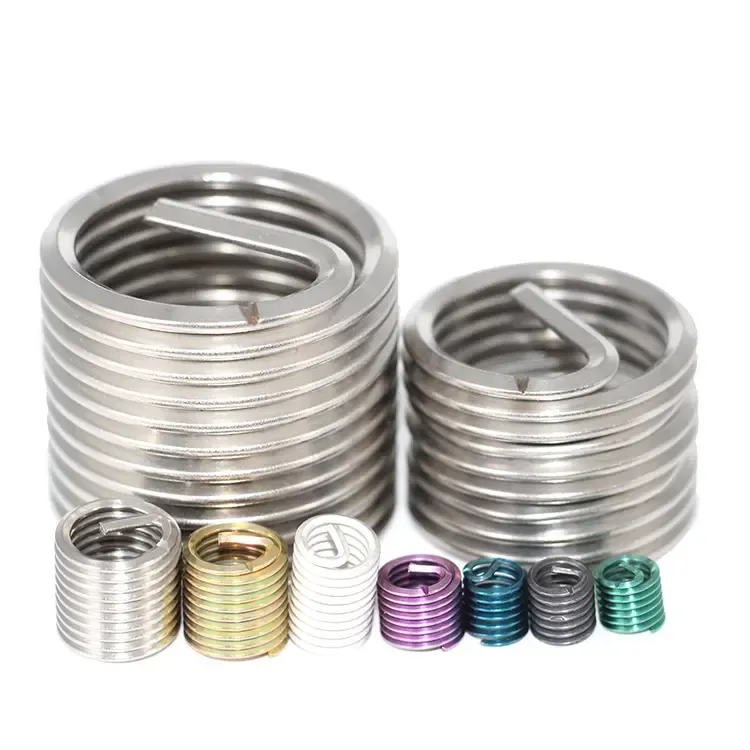
Threaded Inserts are an efficient and reliable solution for threaded connections, especially for soft materials, thin-walled structures, and applications that require repeated disassembly and reassembly. If your project involves any of the following requirements, the use of Threaded Inserts will greatly improve connection performance and product life:
I. How to determine if Threaded Inserts are suitable?
- The base material is a soft material such as plastic, wood or aluminum, which cannot be tapped directly or is prone to slipping.
- The wall thickness of the structure is thin, the thread length is not enough, direct tapping can not meet the strength requirements.
- Products need to be mounted and dismounted repeatedly, and ordinary threads are easy to wear out or loosen;
- There are high requirements for the anti-drawing and anti-torsion performance of the connecting parts
- In precision structures or small spaces, screws need to be precisely positioned and remain firm for a long period of time;
- Existing threads are damaged and need to be repaired efficiently and cost-effectively.
II. Typical scenarios for recommended use of threaded inserts
- Plastic shell assembly: such as 3C electronic products, printers, instruments and equipment shells;
- Furniture structural parts: such as wooden furniture, carpentry connections, removable brackets, etc;
- Metal thin-walled parts: such as sheet metal structure, aluminum profile connection, automotive interior parts, etc;
- 3D printed parts reinforcement: to solve the problems of insufficient strength of printing materials and poor connection;
- High-frequency disassembly and assembly occasions: such as test fixtures, maintenance interfaces, medical device structures, etc;
- Thread repair needs: damage repair and enhancement of existing threaded holes in aluminum and alloy parts, etc.
Do You Have Any Questions?
Let Us Solve Your Problem
Upgrade Your Threads with Rivetfix Inserts
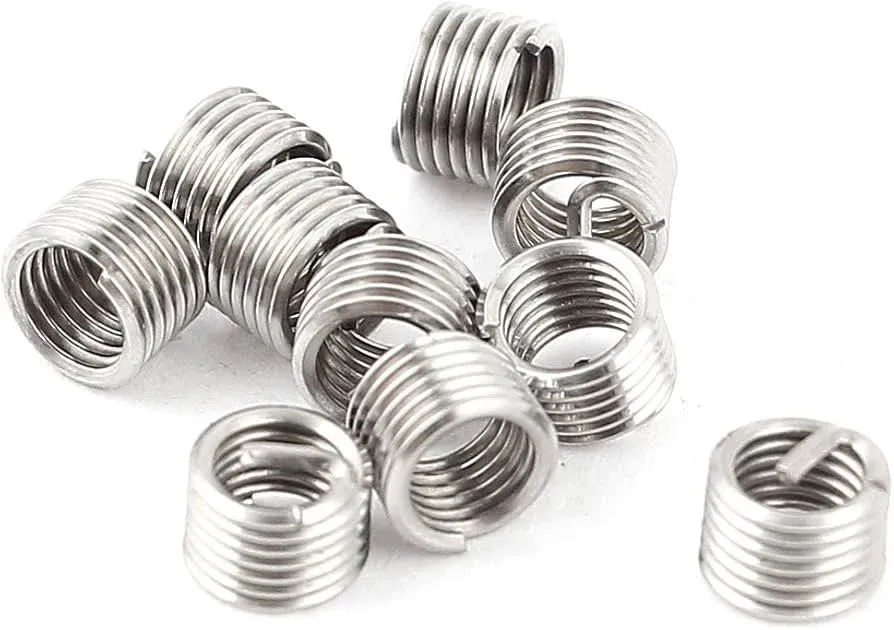
If you’re looking for reliable, high-performance threaded inserts for plastics, metals, or composites — Rivetfix has you covered. Our wide range of materials, custom solutions, and global supply capabilities ensure you get the right insert for any application. Whether you’re in automotive, electronics, furniture, or industrial manufacturing, our inserts offer superior strength, repeatability, and ease of installation.
👉 Contact us today for samples, technical support, or a custom quote — and take your fastening to the next level.
Get High Quality Rivet Nuts Quote!
Send Your Rivet Nut Request
For more than 20 years, Rivetfix has helped customers solve many rivet nuts sourcing needs and technical challenges.
Have a question? Contact us and we’ll provide you with the perfect solution.
